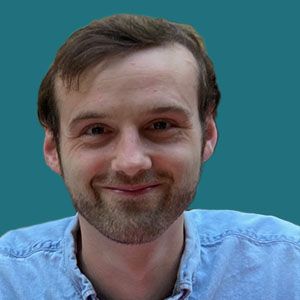New Knowledge of DNA Virus Replication Process Could Inform Gene Therapy Development
Study authors Matthew Charman, PhD, and Matthew D. Weitzman, PhD, elaborated on the findings and implications of their research.
Matthew D. Weitzman, PhD

A recent study published in Nature has shed light on the complex process of DNA virus replication. In particular, the adenovirus 52 kDa protein (52K) has been identified as essential in the formation of biomolecular condensates (BMCs) from viral structural proteins.1,2 Study authors Matthew D. Weitzman, PhD, a professor in the Department of Pathology and Laboratory Medicine at Children's Hospital of Philadelphia (CHOP), and Matthew Charman, PhD, a research associate in the Weitzman Lab at CHOP, believe that their research, which included observations and experiments to examine the location of 52K during the formation of BMCs in the viral infectious cycle, could inform the development of new gene therapies in the future.
CGTLive™ spoke with Weitzman and Charman about their findings and the potential implications for the field of gene therapy research.
Matthew Charman, PhD

CGTLive: What motivated you and your colleagues to conduct this study?
Matthew D. Weitzman, PhD: DNA viruses include ubiquitous, clinically important human pathogens, as well as tools that can be utilized as vaccine and gene therapy vectors. In the Weitzman lab we are interested in answering fundamental questions regarding how DNA viruses replicate. By better understanding the molecular biology of virus replication, we can inform strategies designed to target viral replication in order to combat infection, or strategies designed to produce better gene delivery tools.
Could you summarize your findings for our audience?
Matthew Charman, PhD: We found that the assembly of human adenovirus progeny particles is a highly coordinated process. We discovered that a biophysical process called phase separation is responsible for organizing viral capsid proteins—that’s the proteins that make up the viral particle's outer shell—into nuclear bodies. This regulates assembly such that the assembly of the capsid shell is coordinated with the provision of newly synthesized viral genomes. This ensures that resulting particles each contain a viral genome. When we prevent the formation of viral nuclear bodies, we disrupt this “assembly line” which results in only empty particles being assembled.
Were any of the findings surprising or of particular interest to you in any way?
Matthew Charman, PhD: The formation of membraneless organelles (aka biomolecular condensates) in the nucleus or cytoplasm have attracted a great deal of interest from scientists working across diverse fields. One big challenge has been in understanding and demonstrating how such nuclear or cytoplasmic bodies contribute functionally to biological processes. Our finding that nuclear bodies help coordinate the assembly of adenovirus progeny is not only of great interest to those who study viruses as pathogens and tools, but will likely also provide a great opportunity for scientists working in other areas to gain insight into how these membraneless organelles form, how they are regulated, and how they could be manipulated.
How might this inform the development of gene therapy?
Matthew Charman, PhD: For many DNA viruses, how progeny particles are assembled within infected host cells is something of a black box. When we wish to produce a virus for use as a tool, we typically start an infection in cultured cells, wait for the virus to replicate, and then harvest the resulting progeny. If we wish to tailor the virus to a unique application, we are often limited in how much we can attempt to modify the virus. If we change the virus too much, it usually “breaks” viral replication, and we misassemble or fail to assemble our tools. This is a huge limitation when developing effective viral vectors, particularly in the gene therapy field. One aim of our research is to dissect and define the fundamental processes involved in viral assembly, with the ultimate goal of using this knowledge to develop better gene delivery tools.
Do the study's findings contradict or change our understanding of human adenovirus replication?
Matthew Charman, PhD: DNA viruses are thought to assemble progeny particles by one of two different approaches. In one approach, the capsid shell is first assembled (called a pro-capsid) before subsequently being filled (packaged) with the viral genomes via a hole called the portal. The other approach requires that the viral genome acts as the starting point for assembly, with the capsid forming around the genome to encase it.
It is often assumed that adenovirus (and this assumption might also be true of other DNA viruses) assembles progeny particles by first forming the capsid shell. This left some big unanswered questions, for example, how does the viral genome get into the particle—there is no obvious portal! Our findings suggests that this is likely not the case, the particles instead assemble by the alternate approach in which the capsid forms around the genome.
What else needs to be explored? Are there plans for a follow-up study?
Matthew Charman, PhD: We have a number of really interesting follow-up studies already underway. One such project asks a very ambitious and exciting question: If we can understand the molecular biology required to assemble viral particles, can we then reproduce and reverse-engineer these biological processes to assemble novel virus-like gene delivery tools? By considering lessons learned from viruses it may be possible to harness the amazing power of viral vectors while freeing ourselves from their inherent limitations. We have already begun taking the next steps on the path towards this really exciting goal.
Transcript edited for clarity.